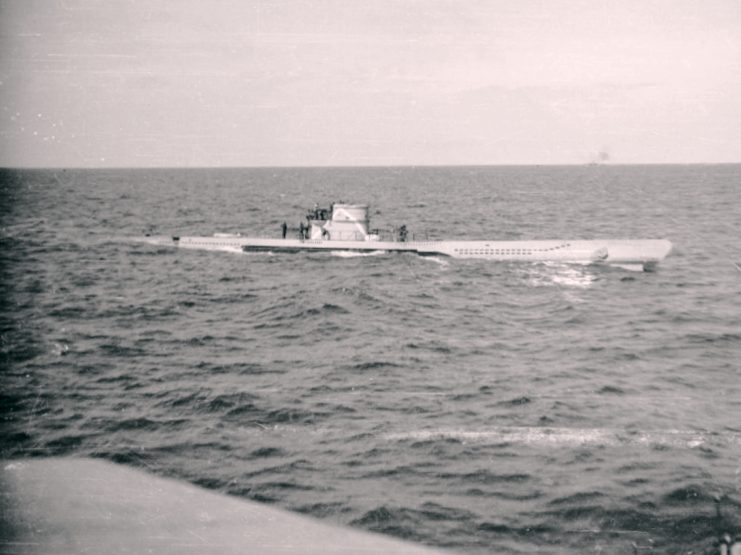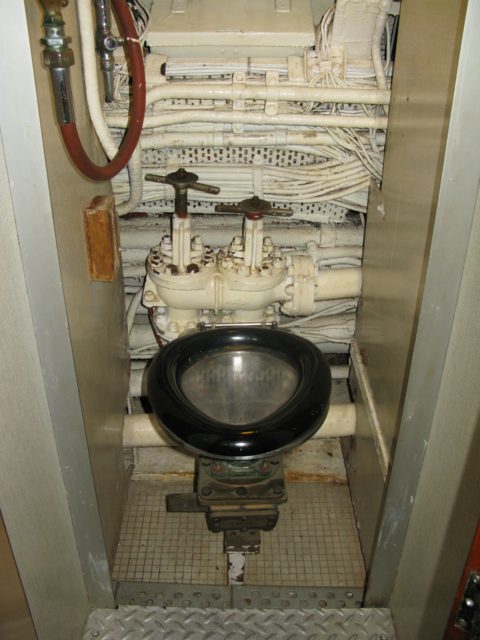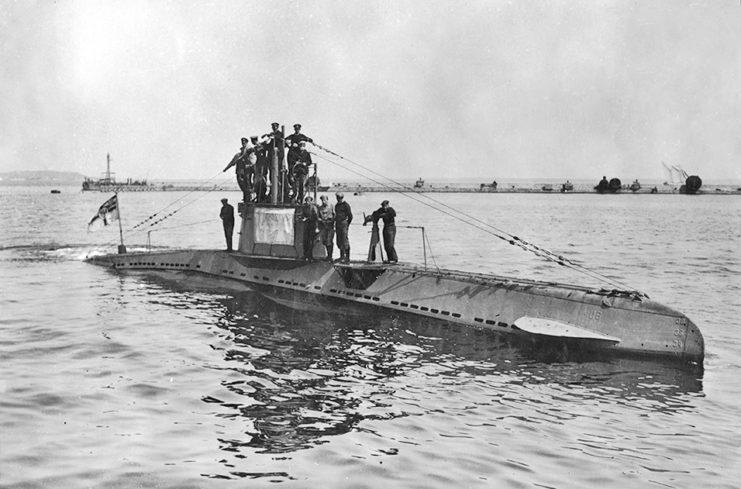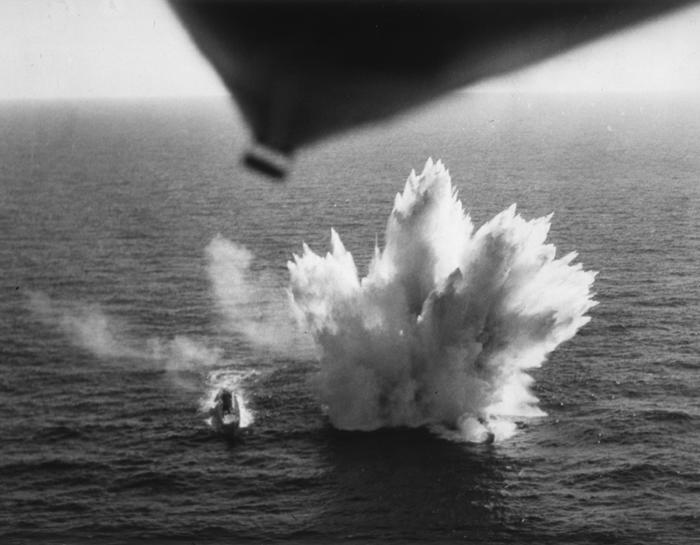During the latter years of the Second World War, the German U-boat U-1206 was stealthily cruising off the coast of Scotland. It was one of the more advanced submarines in the German fleet, but this would soon prove to be its downfall. One of the vessel’s advanced features was a state-of-the-art plumbing system. After a series of perplexing errors, U-1206 was “sunk by a toilet.”
Some U-boats were given ‘high-tech’ toilets

U-1206 had been part of the 8th U-boat Flotilla before coming under the command of Kapitäleutnant Karl-Adolf Schlitt of the 11th U-boat Flotilla. It was part of the Type VIIC series, an advanced class of submarine considered to be the “workhorse” of the Kriegsmarine‘s U-boat fleet during the Second World War. They were designed to sink enemy convoys undetected and with extreme accuracy.
Some U-boats in this class were fitted with the latest technologies, including a high-tech toilet. At this time, most were fitted with storage tanks that would hold human waste onboard until the vessel surfaced, at which point the crew would dispense the waste into the ocean. These tanks required space and weight, and submarines were short on both.
These high-tech toilets were confusing to use

German engineers thus developed a toilet that could be flushed while underwater, using a high pressure system that directed human waste through several valves. It then used compressed air to push the waste into the ocean. A toilet of this capability meant a U-boat could remain undetected without having to surface as a result of a natural human process.
Unfortunately, these high-tech toilets became extremely complicated to use. They were so difficult, in fact, that a waste disposal unit manager had to be onboard. They were trained toilet operators and were the only ones who knew how to properly dispose of the human waste through these intricate toilet systems.
Karl-Adolf Schlitt tried to use U-1206‘s toilet on his own

On April 6, 1945, U-1206 departed from Kristiansand, Norway for its first active patrol. Just over a week later, answering nature’s call would result in the U-boat’s demise.
On April 14, the vessel was cruising about nine miles off the coast of Peterhead, Scotland, at a depth of 200 feet, when Schlitt needed to use the toilet. Instead of consulting with the operator prior to doing his business, he decided to use the gadget on his own.
When he couldn’t figure out how to properly dispose of the his waste, Schlitt conceded and called on the toilet operator for help. When he described the situation, the operator misunderstood the issue and opened the wrong valve. This resulted in gallons upon gallons of seawater and human waste seeping into the room. The water began to leak down to the battery compartment directly below, causing a chemical reaction that released chlorine gas in lethal amounts.
U-1206 was forced to surface

With no other option, Schlitt ordered U-1206 to surface. The crew dropped their torpedoes to shed any extra weight, and once they breached the surface were able to disperse of the chlorine gas by blowing air into the vessel.
When the U-boat surfaced, it did so directly under a Royal Air Force (RAF) patrol. The aircraft quickly spotted the submarine and began bombing it. The attack caused serious damage.
At this point, U-1206 was unable to dive, forcing Schlitt to order his crew to abandon ship, while he destroyed any secret material onboard. As they abandoned U-1206, three crew members died, while the remaining 46 were taken as prisoners of war (POWs). One had perished the day before as a result of an illness.
U-1206 ultimately sank.
Karl-Adolf Schlitt denied his role in the incident

The war in Europe came to an end just a few weeks later. All the while, Schlitt denied his role in the sinking of U-1206, disputing any allegation of misuse of the toilet. In his official statement, he said, “I was in the engine room, when at the front of the boat there was a water leak. What I have learned is that a mechanic had tried to repair the forward WC’s outboard vent. I would say — although I do not have any proof — that the outer vent indicator either gave false readings or none at all.”
He also described what happened next, saying, “The engineer who was in the control room at the time managed to make the boat buoyant and surfaced, despite severe flooding. Meanwhile the batteries were covered with sea water. Chlorine gas started to fill the boat. We were then incapable of diving or moving. At this point, British planes and patrols discovered us. I let the boat sink.”
New! Want to become a trivia master? Sign up for our War History Fact of the Day newsletter!
More from us: HMS Victory: The World’s Oldest Warship Still In Commission
Capt. Schlitt died in 2009, at the age of 90. Given the lack of evidence, those who study U-1206‘s sinking cannot say with certainty that he played a role in its demise. What can be said for certain is that a malfunction of the U-boat’s toilet was the cause. Decades later, in May 2012, divers discovered the wreck of U-1206 approximately 12 miles off the coast of Aberdeenshire. It sits 86 meters below the surface and has remained in relatively good condition.
